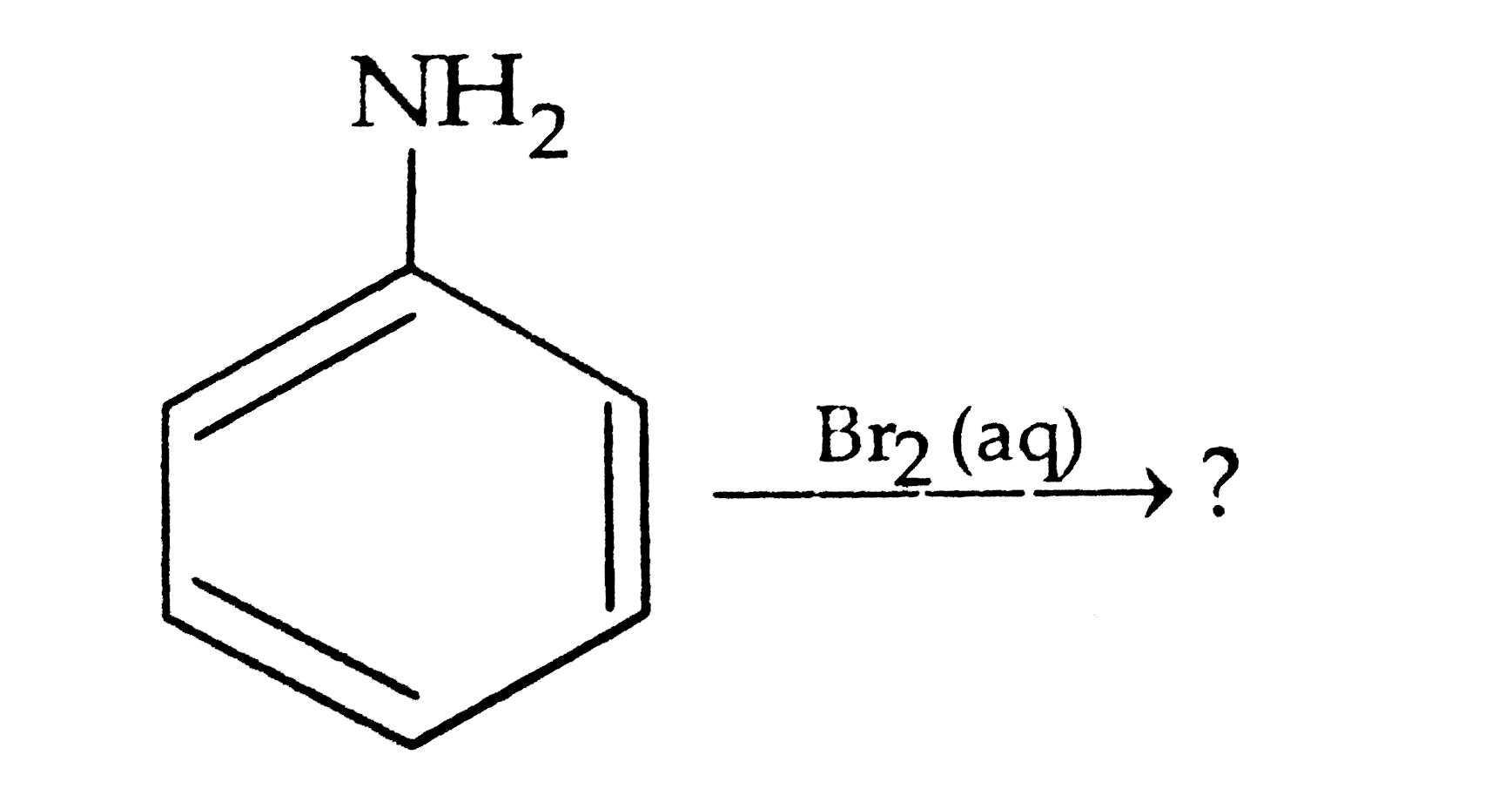Write the products of the following reactions:
CH3CO2H(a)Br2,red P−−−−−−−−→(b)H2O
To solve the given reaction, we need to analyze the reaction of acetic acid (CH₃COOH) with bromine (Br₂) in the presence of red phosphorus (red P) and water (H₂O). This reaction is known as the Hell-Volhard-Zelinsky (HVZ) reaction, which involves the halogenation of carboxylic acids at the alpha position.
1. Identify the Reactants:
- The reactant is acetic acid (CH₃COOH).
- The halogen used is bromine (Br₂).
- The presence of red phosphorus and water is noted.
2. Understand the HVZ Reaction:
- The HVZ reaction allows for the substitution of alpha hydrogen atoms in carboxylic acids with halogen atoms.
- Acetic acid has three alpha hydrogen atoms (the hydrogens attached to the carbon adjacent to the carboxylic acid group).
3. Substitution of Alpha Hydrogens:
- In the first step, one of the alpha hydrogens in acetic acid is replaced by a bromine atom, forming bromoacetic acid (CH₂BrCOOH).
- The reaction continues, replacing each of the alpha hydrogens with bromine atoms.
4. Complete the Reaction:
- Since acetic acid has three alpha hydrogen atoms, all three can be replaced by bromine atoms.
- The final product after all substitutions will be 1,2,3-tribromoacetic acid (CBr₃COOH).
5. Write the Final Product:
- The complete reaction can be summarized as:
CH3COOH+Br2red P, H2O−−−−−−→CBr3COOH
- The final product is 1,2,3-tribromoacetic acid.
Final Answer:
The product of the reaction is 1,2,3-tribromoacetic acid (CBr₃COOH).
- The reactant is acetic acid (CH₃COOH).
- The halogen used is bromine (Br₂).
- The presence of red phosphorus and water is noted.
- The HVZ reaction allows for the substitution of alpha hydrogen atoms in carboxylic acids with halogen atoms.
- Acetic acid has three alpha hydrogen atoms (the hydrogens attached to the carbon adjacent to the carboxylic acid group).
- In the first step, one of the alpha hydrogens in acetic acid is replaced by a bromine atom, forming bromoacetic acid (CH₂BrCOOH).
- The reaction continues, replacing each of the alpha hydrogens with bromine atoms.
- Since acetic acid has three alpha hydrogen atoms, all three can be replaced by bromine atoms.
- The final product after all substitutions will be 1,2,3-tribromoacetic acid (CBr₃COOH).
- The complete reaction can be summarized as:
CH3COOH+Br2red P, H2O−−−−−−→CBr3COOH
- The final product is 1,2,3-tribromoacetic acid.
The product of the reaction is 1,2,3-tribromoacetic acid (CBr₃COOH).
Topper's Solved these Questions
- ALDEHYDES, KETONES AND CARBOXYLIC ACIDSBOOK - ICSECHAPTER - ALDEHYDES, KETONES AND CARBOXYLIC ACIDSEXERCISE - ISC EXAMINATION QUESTIONS (PART-I OBJECTIVE QUESTIONS) (FILL IN THE BLANKS)
27 Videos
- ALDEHYDES, KETONES AND CARBOXYLIC ACIDSBOOK - ICSECHAPTER - ALDEHYDES, KETONES AND CARBOXYLIC ACIDSEXERCISE - ISC EXAMINATION QUESTIONS (PART-I OBJECTIVE QUESTIONS) (MULTIPLE CHOICE QUESTION)
24 Videos
- ALDEHYDES, KETONES AND CARBOXYLIC ACIDSBOOK - ICSECHAPTER - ALDEHYDES, KETONES AND CARBOXYLIC ACIDSEXERCISE - EXERCISE (PART-II DESCRIPTIVE QUESTIONS) (VERY SHORT QUESTIONS)
282 Videos
- ALCOHOLS, PHENOLS AND ETHERS BOOK - ICSECHAPTER - ALCOHOLS, PHENOLS AND ETHERS EXERCISE - ISC EXAMINATION QUESTIONS
25 Videos
- APPENDIX II ( TYPICAL CONVERSIONS)BOOK - ICSECHAPTER - APPENDIX II ( TYPICAL CONVERSIONS)EXERCISE - AROMATIC CONVERSIONS
98 Videos
Similar Questions
(a) Write the products of the following reactions :

(ii) CH3MgBr+CO2Dry ether−−−−−→H3O+
(iii) CH3CH2COOH+Br2Red Phosphorus−−−−−−−−−→
(b) Write simple chemical tests to distinguish between the following pairs of compounds :
(i) Propanal and propanone (ii) Benzaldehyde and Benzoic acid
View SolutionThe product "A" in the following reaction is :CH3−CO−CH2COOC2H5NaOH−−−−−−→H2OA
View SolutionWrite the product of following reactions :
(a) CH3−H3C∣C=CH3∣C−CH3O3−−−−−→Zn/H2O , (b) CH3−C≡C−CH3O3−−−−−→Zn/H2O
( c) CH3−C≡C−CH3O3/H2O2−−−−−→ , (d) CH3−CH3∣C=CH−CH3O3/H2O2−−−−−→
View SolutionWrite the main product (s) in each of the following reaction :
(i) CH3−CH3∣C∣CH3−O−CH3+HI→
(ii) CH3−CH=CH2(i)B2H6−−−−−−−−−−−→(ii)3H2O2/OH−
(iii) C6H5−OH(i)aq.NaOH−−−−−−−−→(ii)CO2,H+
View SolutionWrite mechanism of the following reaction:
CH3CH2OHHBr−−→CH3CH2Br+H2O
View SolutionWrite the product of following reactions :
(i) CH3−C≡C−CH=CH2O3/H2O2−−−−−→ , (ii) , O3/H2O2−−−−−→
, O3/H2O2−−−−−→
View SolutionMajor product of the following reaction
CH3−CH2−BrKCN−−→¯¯¯OH−−→H2OPCl5−−→Δ product
View SolutionWrite structures of the products of the following reactions:
(i) CH3−CH=CH2H2O/H+−−−−−→
(ii)
(iii) CH3−CH2−C | CH3H−CHONaBH4−−−−→
View SolutionWrite the main products of the following reactions:
(i) C6H5N+2Cl−H3PO2+H2O−−−−−−−−→?
(ii)
(iii) CH3−C∣∣O−NH2Br2+NaOH−−−−−−−→?
View SolutionWrite the main products of the following reactions:
(i) C6H5N+2Cl−H3PO2+H2O−−−−−−−−→?

(iii) CH3−C∣∣O−NH2Br2+NaOH−−−−−−−→?
View Solution
